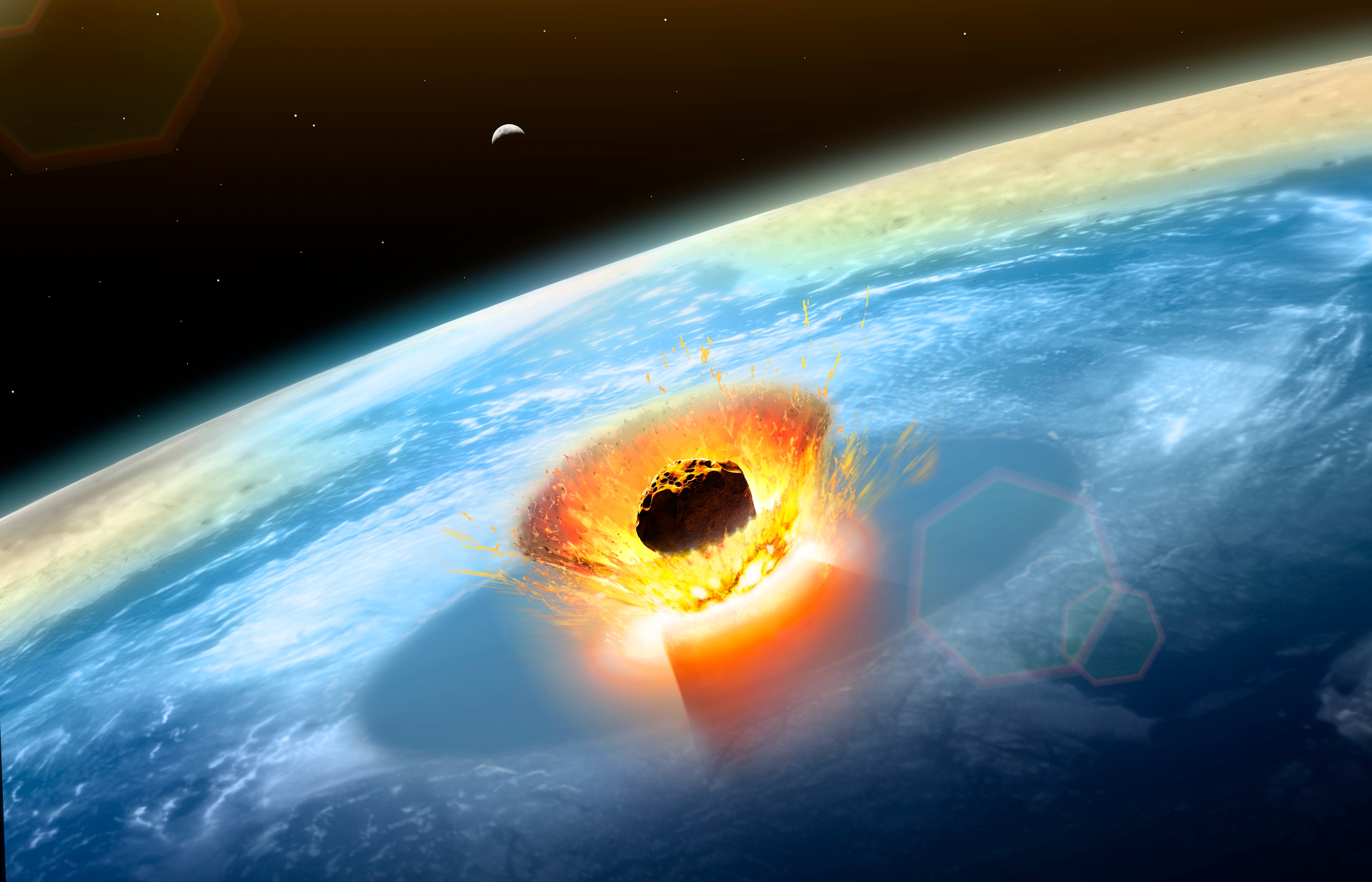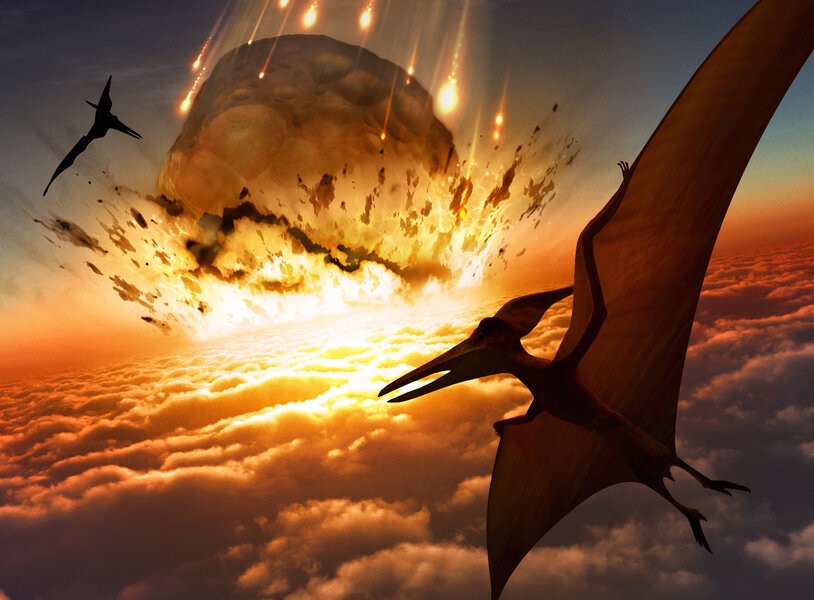Create a free profile to get unlimited access to exclusive videos, sweepstakes, and more!
Dinosaur-killing asteroid triggered a global tsunami with mile-high waves
The asteroid was only the beginning.

An otherwise unassuming spring day 66 million years ago became one of the worst days our planet has ever experienced, especially for the land-dwelling animals which called it home. The pure destruction of the Chicxulub impact had devastating consequences for nearly all life on Earth, wiping out roughly three quarters of all living species. It’s the sort of historical story which inspires fictional tales and has us all wondering how we’d spend our last minutes or days, waiting for an asteroid to strike. Maybe we’d try to destroy it by mounting a space mission like the recent DART mission. Or maybe we’d spend our days Seeking a Friend for the End of the World.
Whatever we decide to do, we’ll need to do it quickly because it turns out that the impact was only the beginning of a catastrophic chain of events which propagated outward to affect the entire planet. For about 10 minutes after impact, the world was quite literally rocked. The asteroid gouged a huge piece of the planet away and tossed it violently toward the sky. Then, as thing settled down, a tsunami the likes of which humanity has thankfully never witnessed spread outward from the Gulf of Mexico, hurtling miles-high waves at everything in its wake. Those are the findings of a new study published in the journal Advanced Earth and Space Science.
Molly Range was a master’s student in the Department of Earth and Environmental Sciences at the University of Michigan when looking for the research that would encompass her thesis. That’s when a professor turned her onto the idea of modelling the tsunami that emerged in the wake of the impact.
“It just sounded like a fun and interesting problem. No one had ever done a global simulation of the tsunami and we thought we could do that. We quickly realized why it hadn’t ever been done. It was a very complex problem,” Range told SYFY WIRE.
Range assembled a team of advisors and collaborators and got to work, but the team quickly discovered modeling the tsunami was more complicated than they’d expected. All of the existing modeling systems are used for modeling the sorts of tsunamis we might actually encounter on an ordinary day. They weren’t built to account for the kinds of forces present after an asteroid impact.
“We realized we needed a two-step simulation, so we brought in Brandon Johnson,” Range said about her colleague from the Department of Earth, Atmospheric, and Planetary Sciences at Purdue University. “He did the impact simulation part of it first, then we transferred it to an ocean model once some of the complexities had resolved, about 10 minutes after impact.”
That first simulation, which can be found in the first supplemental video of the published paper, shows a slice of the Earth from the side. Before it starts, you can see a thin layer of water resting on a layer of sediment and a layer of bedrock. The asteroid is perched nefariously right at the waterline, waiting for you to press play on one of the largest extinction events of all time. At the instant the simulation begins, a hole 10 kilometers deep is scooped out of the Earth and everything is cast skyward. A shield wall more than 40 kilometers tall pushes outward from the impact site as bits of ejecta rain back down before plunging into ocean. On the other end of the chaos is a wave a mile high. Researchers plugged that wave into ocean models to reveal a global tsunami event which dredged up the seafloor.
“The impact tsunami had 30,000 times more energy than the 2004 tsunami. The Indian Ocean tsunami caused massive devastation and a lot of lives were lost. So, to have an event that was 30,000 times that is crazy, and that wasn’t even the biggest thing happening that day,” Range said.
As the wave moved outward from the point of impact, it carried all of that kinetic energy with it. As it crossed the oceans, things were relatively calm. Deep waters aren’t largely impacted by tsunami, but as it arrived at distant shores things got more problematic.
The models suggest that the impact tsunami scoured the ocean floor in coastal regions all over the planet. Within 48 hours of the impact, there wasn’t a beach anywhere on Earth which didn’t feel the destructive touch of that wave. Subsequent review of the geological record at more than 100 sites all over the world provided confirmation that sediments deposited just before and after the impact are mixed up in ways we would expect from a global tsunami. Moreover, it’s likely that the waves inundated coastal areas, carrying ocean water at high speeds well into landlocked areas.
That’s the question researchers are hoping to answer next. Future studies will look at coast inundations and hopefully determine just how far inland the waves traveled. There’s also the question of how the tsunami complicated and contributed to species extinction.
That data not only shines a light on our planet’s distant past but also further cements our understanding that an impact like Chicxulub would be, scientifically speaking, really bad. We should probably get a few more of those DART spacecraft in the air, just in case.



























